What is the hardest mountain to climb? The more complex the mountain, the more willing ones desire to conquest it. However, complexity does not necessarily mean the height of a mountain. Some mountains may not be so high but very dangerous and difficult to climb. We picked up the 35 most difficult and dangerous mountains in the world – on all continents plus the Antarctic.
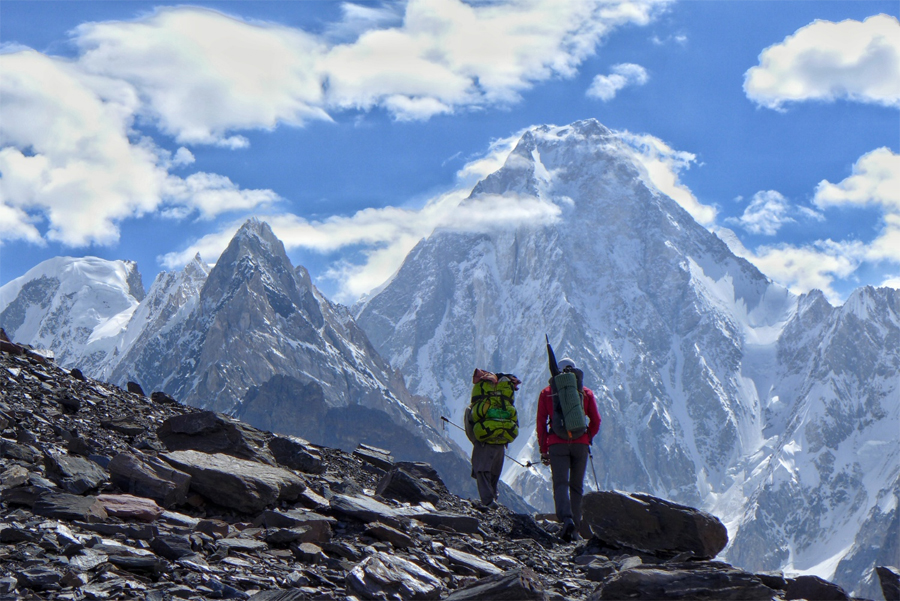
It’s not merely height that makes a mountain difficult to climb. There are so many variables: the route you choose, and the weather. Some mountains have avalanche risks and others are nefarious for their impossible cliffs.
If your choice of drug is the mountains, and you’re looking for a challenge, you’ve come to the right place. Here’s our list of the 35 hardest mountains to climb across the world, with careful consideration of all risk factors. Get ready for a new trekking wishlist!
For each mountain, we provide a succinct list detailing key aspects crucial for climbers and enthusiasts alike. These aspects include the ‘Climbing Season’, indicating the most favorable months for an ascent; ‘Most Popular Route’, highlighting the commonly used path or approach by climbers; ‘Fatalities’, giving an insight into the number of recorded deaths, which reflects the mountain’s difficulty and dangers; and ‘Access and Base Camps’, pointing out the starting points and essential camps utilized during the expeditions. This information is aimed at offering a quick yet informative glance into what each of these formidable peaks entails.
EUROPE
1. The Eiger (3970 m) – Switzerland
Located in the Bernese Alps, the Eiger has earned the nickname of Mordwand, meaning “murderous wall”, a pun on its actual name, Nordwand (North Wall). It might look small and accessible when compared to huge mountains, but its smallness is deceptive.
The first ascent of the Eiger was made in 1858 by Swiss explorers, but only in 1938 was its north face climbed. The north face route continues to challenge climbers – it requires immense technical expertise in mountaineering. Look out for the increasing rock and ice falls, and keep 2-3 days in hand for the summit!
- Climbing Season: June to September
- Most Popular Route: 1938 Heckmair Route
- Fatalities: at least 64 fatalities)
- Access and Base Camps: Grindelwald/Lauterbrunnen Base
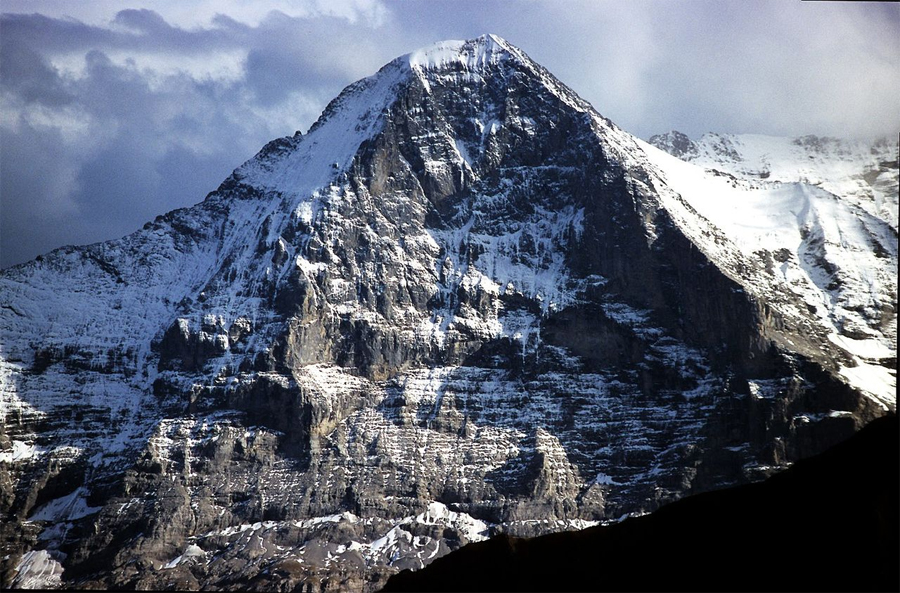
Credit: wikipedia.org
2. The Matterhorn (4478 m) – Switzerland
The Matterhorn is one of the most dangerous peaks in the Alps, with fatalities every year. This is caused by multiple factors: technical difficulty, avalanches, and rock fall, and strangely enough – people! The peak becomes massively overcrowded during climbing season.
What’s unique about the Matterhorn is its pyramidal nature and its symmetry. Ever since its first ascent in 1865, it’s become an iconic mountain in the Alps. An important thing to keep in mind is the weather: the region is prone to storms, so plan your trek accordingly. High summer is a good time to head here.
- Climbing Season: June to September
- Most Popular Route: Hörnli Ridge
- Fatalities: over 500 since 1865
- Access and Base Camps: Zermatt Base
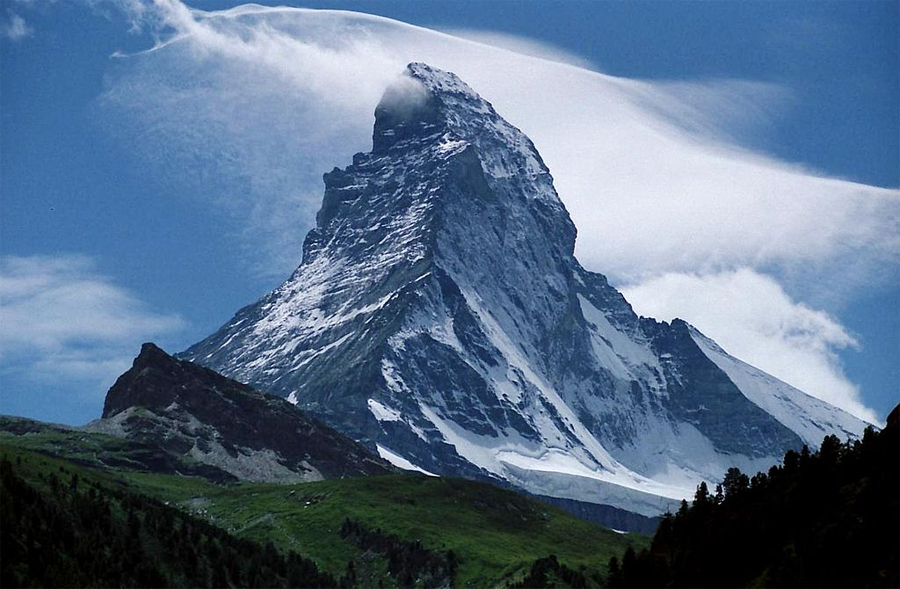
Credit: wikipedia.org
3. Mont Blanc (4807 m) – France/Italy
The tallest mountain in Europe, and its prime location between two beautiful countries: no wonder Mont Blanc is so popular with tourists. Over 20,000 people summit this peak every year now, more than two centuries after it was originally climbed.
The ascent is not very technically challenging, especially when compared to some other mountains in the Alps. However, there are sections notorious for rockfalls. Moreover, one might get taken in by the apparent ‘easiness’ of the hike, and not have proper equipment or clothing, which leads to fatalities. Another factor: the peak seems deceptively close, but certain routes require ascent over two other 4000m mountains before the final section of Mont Blanc can be climbed.
- Climbing Season: June to September
- Most Popular Route: Goûter Route
- Fatalities: approximately 100 per year
- Access and Base Camps: Chamonix/St. Gervais
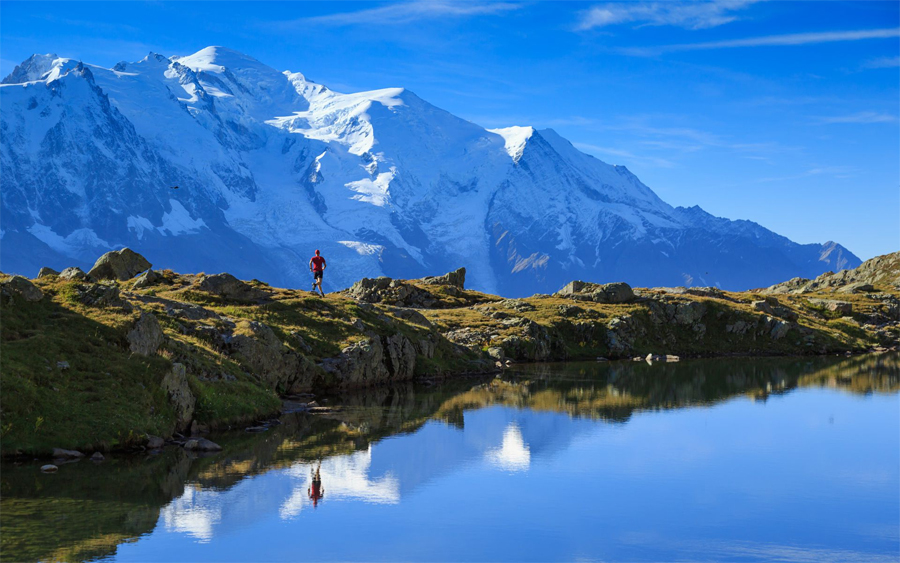
Credit: www.outdooritaly.eu
4. Mount Elbrus (5642 m) – Russia
Mount Elbrus is a dormant volcano in the Caucasus Mountains of Russia. Due to its northern location, it’s extremely cold there, and handling the altitude can be difficult. It is much more difficult to breathe there than if you’re trekking in Nepal or the Andes.
Again, the climb is not very technically difficult, so if you have the right gear and the weather is on your side, a hiker experienced with high altitudes should not have a problem. However, most people are complacent with ‘easier’ summits. Bad weather (which causes poor visibility, especially dangerous during descent) and poor acclimatization on part of the climbers lead to multiple deaths every year. So practice your ice axe skills, and look out for storms!
- Climbing Season: May to September
- Most Popular Route: South Route
- Fatalities: relatively low
- Access and Base Camps: Terskol Base
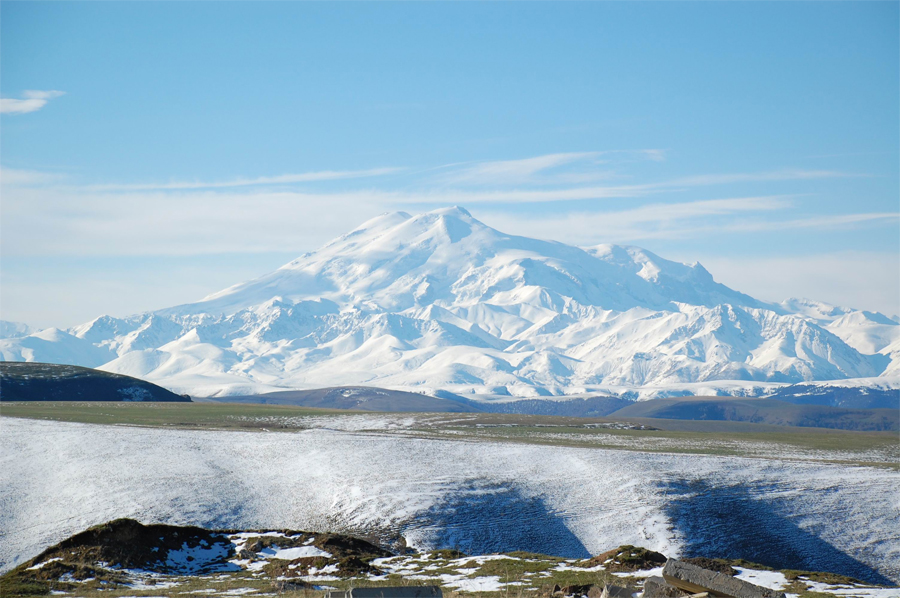
Credit: wikipedia.org
ASIA
5. Gauri Sankar (7134 m) – Nepal/China
Gauri Sankar is a peak in the Himalayas, about 100 kilometers away from Kathmandu, and close to the Nepal-China border. Towards the north is its sister peak, Melungtse. The mountain has two summits; the northern summit (which is higher) is called Sankar while the southern summit is called Gauri.
Nepal opened up to tourism only in 1950, so the first attempts to climb Gauri Sankar were in the 50s and 60s, but the steep ice faces on all sides and bad weather made the expeditions unsuccessful, and it was only in 1979 that climbers reached the top. The route requires incredible technical skills to reach the top of the ice face, let alone to reach the summit. Even now, there have been only a few successful mountaineers who have managed to do it.
- Climbing Season: April to May, September to October
- Most Popular Route: South Ridge
- Fatalities: limited data
- Access and Base Camps: Rolwaling Valley Base
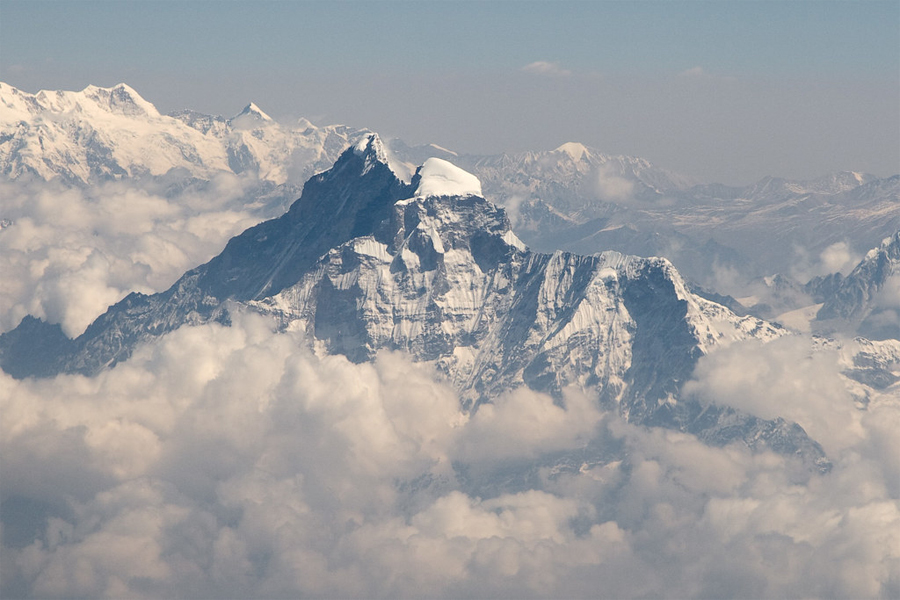
Credit: John Town
6. Melungtse (7181 m) – China (Tibet)
Melungtse lies north of the Nepal-China border, in the Tibet Autonomous Region of China. Gauri Sankar is better known since it is visible from Nepal, but Melungtse is perhaps even more treacherous.
After a few failed (and illegal!) attempts, Melungtse was finally scaled in 1992. And it hasn’t been conquered since – although there have been a couple of attempts. The reason is partially its inaccessibility, but it is also an incredibly steep mountain. The steep faces make it much more difficult than the elevation would suggest.
- Climbing Season: April to May, September to October
- Most Popular Route: West Face
- Fatalities: limited data
- Access and Base Camps: Tingri Base
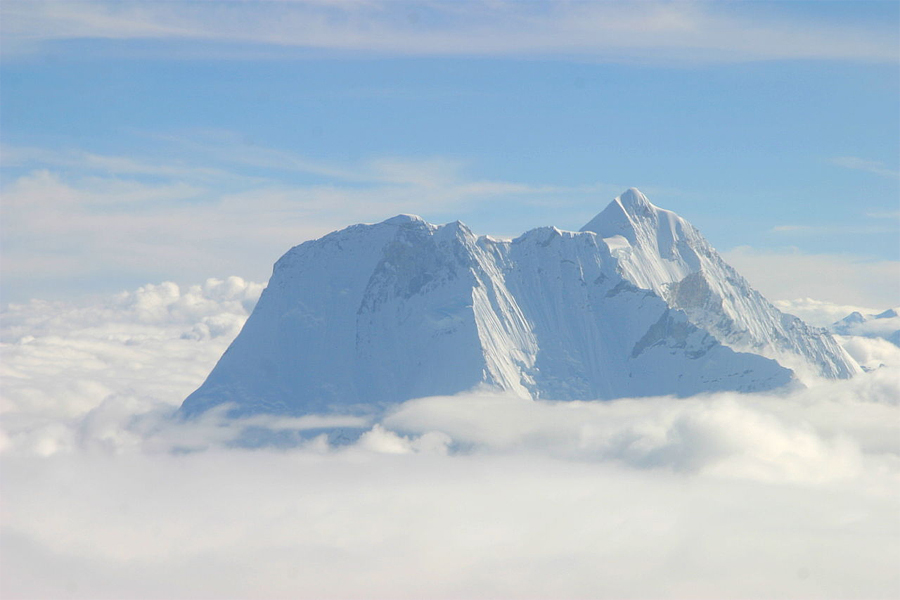
Credit: wikipedia.org
7. Baintha Brakk (7285 m) – Pakistan
This peak in Pakistan’s Karakoram Range has such a difficult climb that only three times have expeditions reached the top.. Also known as ‘The Ogre’, the mountain is known for its steepness and rough, uneven cliff; its terrain is much more difficult to traverse than most Karakoram peaks.
The first successful ascent was made in 1977, and even then, the climbers almost died during the descent. 21 years passed before another expedition was able to summit the granite tower. It is the combination of high altitude, steepness, unpredictable weather, and its proximity to the Uzun Brakk glacier that make the climb especially dangerous. You have to walk under unstable ice walls and traverse ice slopes before the actual summit!
- Climbing Season: June to August
- Most Popular Route: South Face
- Fatalities: high
- Access and Base Camps: Askole Base
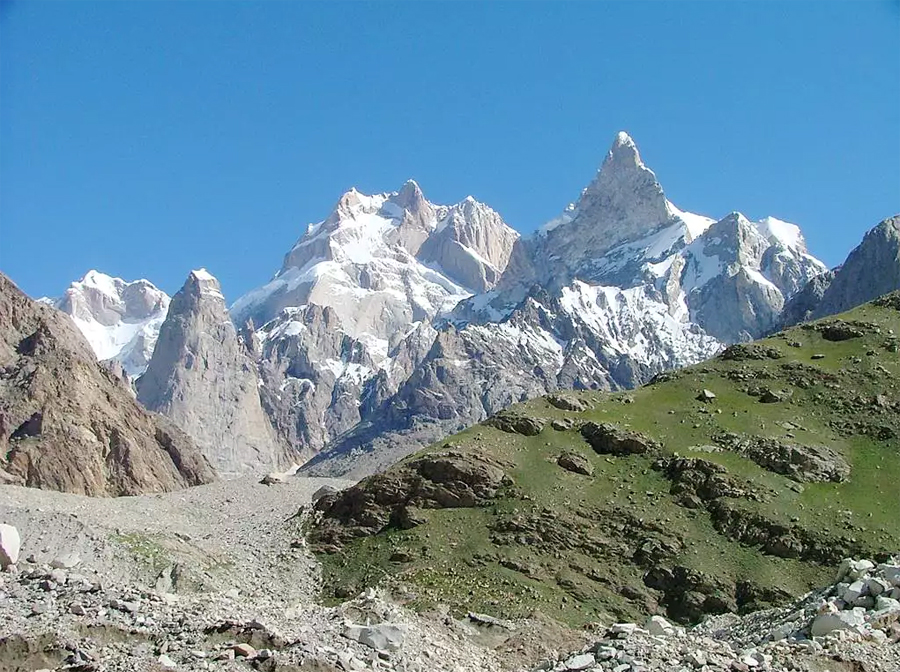
Credit: www.summitpost.org
8. Jannu (7710 m) – Nepal
Officially called Kumbhakarna, this peak is a western outlier of Kanchenjunga and is connected to it by a long ridge. It was first climbed in 1962 from the southeast ridge.
This mountain is well known for its climbing challenge. Not only is the elevation high, but the climb is particularly steep near the summit. The north face (ominously called the “Wall of Shadows”) saw its first ascent only in 1976; even then, the team avoided the steep headwall at the top of the face, choosing instead to go around it. In 2004, the direct face was finally climbed using big-wall aid techniques.
- Climbing Season: April to May, October to November
- Most Popular Route: North Face
- Fatalities: moderate
- Access and Base Camps: Kanchenjunga Base
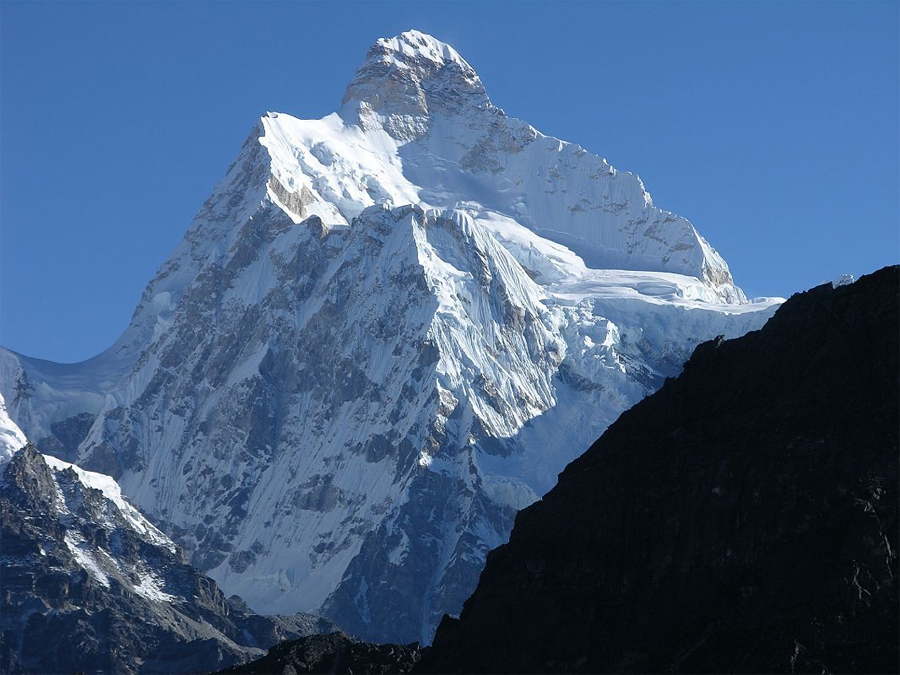
Credit: explorersweb.com
9. Gasherbrum IV (7925 m) – Pakistan
The Gasherbrums are a remote group of mountains located in the Gilgit-Baltistan region of Pakistan. They are part of the Karakoram Range, and contain three of the world’s 8000m peaks! Interestingly, Gasherbrum IV was first surveyed as K3 in the 1800s – today, out of the five mountains in the K (Karakoram) series, only K2 retains its name.
Gasherbrum IV was first climbed in 1959 but has never seen a winter ascent. Only in 1997 was its high west face (the most visible face of the mountain) climbed. It enjoys its reputation as one of the most difficult peaks to summit because of its height, steepness, and the unpredictable weather in the area.
- Climbing Season: June to August
- Most Popular Route: Northwest Ridge
- Fatalities: considerable
- Access and Base Camps: Gasherbrum Base Camp

Credit: Aleš Česen
10. Annapurna (8091 m) – Nepal
The Annapurna massif is a 55 kilometer stretch with multiple peaks. A legendary peak part of the elite 8000m club, Annapurna I is extremely popular with the mountaineering community. With a fatality rate of almost 40%, however, the ascent is definitely not an easy one.
In 1950, Annapurna I was climbed for the first time. Its south face, considered one of the most difficult climbs in the world, was climbed only in 1970, however. The peak has numerous avalanche-prone regions and unstable ice walls. The climate is also hard to rely upon – a snowstorm can hit anytime, and low visibility immediately escalates the danger of any trek.
- Climbing Season: April to May, October to November
- Most Popular Route: North Face
- Fatalities: extremely high
- Access and Base Camps: Annapurna Base Camp

Credit: wikipedia.org
11. Nanga Parbat (8126 m) – Pakistan
Nanga Parbat is the world’s 9th highest mountain and an extremely challenging climb. Located in the remote Gilgit Baltistan region, it is the western anchor of the Himalayas, and sometimes called the Killer Mountain or the Man-Eater because of the fatalities.
This peak has the largest (and perhaps most intimidating) rock wall: the legendary Rupal Face on the south side which rises over 15,000 feet! You need both skill and dedication to cross it. Nanga Parbat has never been climbed in the winter, although multiple people have died trying.
- Climbing Season: June to August
- Most Popular Route: Kinshofer Route
- Fatalities: high (around 68 fatalities)
- Access and Base Camps: Fairy Meadows Base
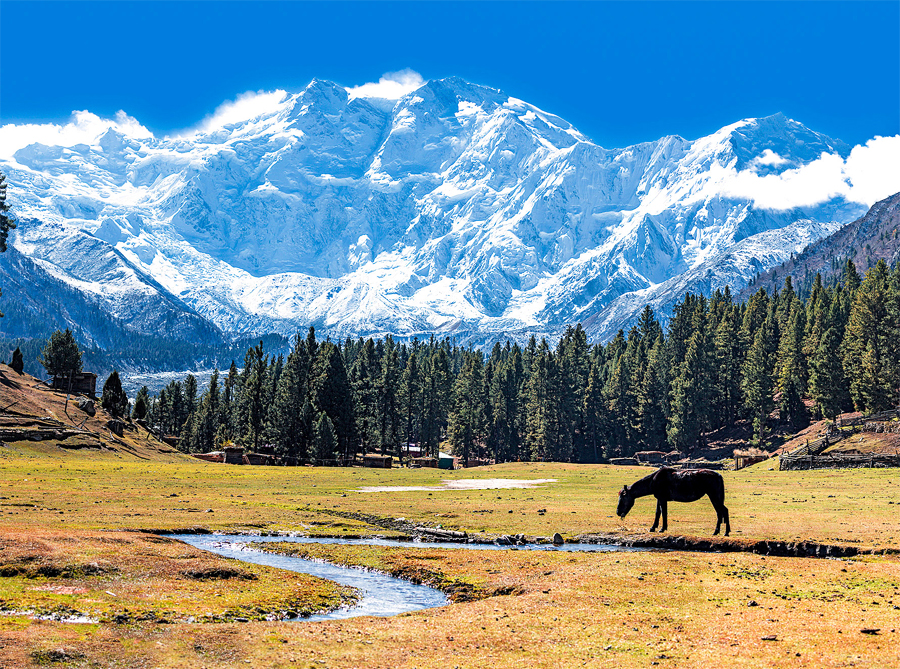
Credit: wikipedia.org
12. Dhaulagiri I (8167 m) – Nepal
The Dhaulagiri massif extends 120 kilometre from river Gandaki to Bheri in Nepal. Dhaulagiri I (the only eight thousander in the massif) is only about 34 kilometre west from Annapurna I, and in clear weather, is visible from north Indian plans!
It rises suddenly from lower terrain (7000m from the Gandaki river), and has five ridges and south and west faces. Since 1960, ascents have been made from every direction. The south face, however, wasn’t climbed until 1999 – it requires extensive equipment along with skill and experience. Of course, you also have to keep a lookout for ice avalanches.
- Climbing Season: April to May, September to October
- Most Popular Route: Northeast Ridge
- Fatalities: significant (around 80 fatalities)
- Access and Base Camps: Dhaulagiri Base Camp
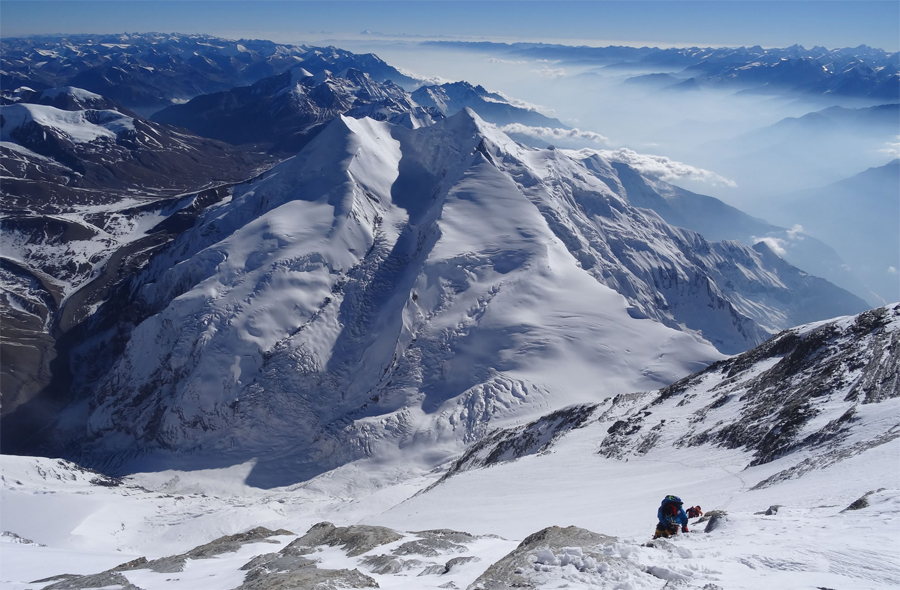
Credit: www.asianadventurenepal.com
13. Makalu (8481 m) – Nepal/China
Makalu is the fifth highest peak on earth and is only about 20 kilometres away from Mount Everest. It is situated on the border in the middle of Nepal and Tibet Autonomous Region of China and is an isolated peak. It’s considered one of the hardest mountains to climb, perhaps rivaled only by K2.
The peak has an incredibly unique structure: it is shaped like a four-sided pyramid. Part of the difficulty was the inaccessibility of the base camp itself, but now the situation is better because of helicopters. Climbing Makalu requires weeks of acclimatization, and one must be experienced with glaciers and seracs. It’s definitely an endurance test!
- Climbing Season: April to May, September to October
- Most Popular Route: Southeast Ridge
- Fatalities: moderate (over 30 fatalities)
- Access and Base Camps: Makalu Base Camp
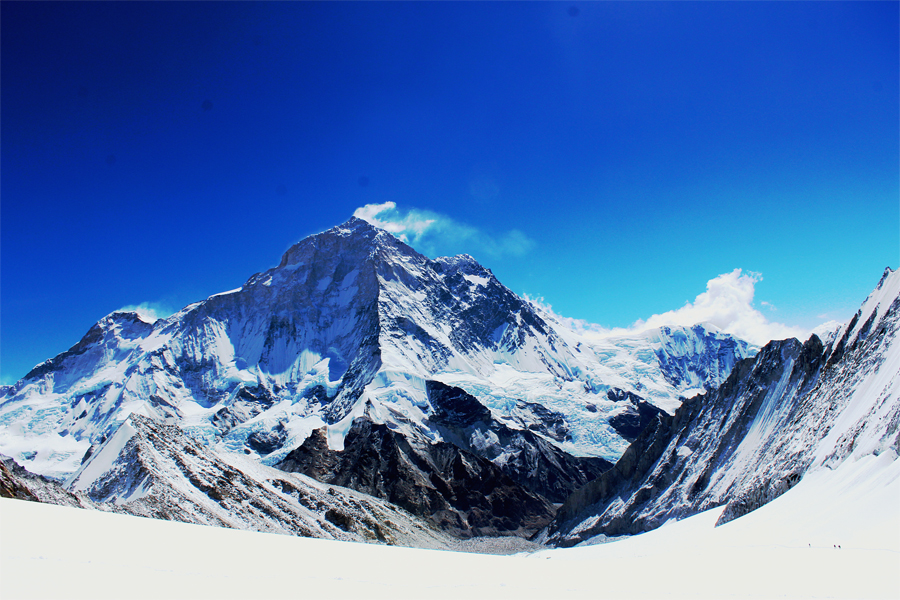
Credit: trekhikes.com
14. Lhotse (8516 m) – Nepal/China
Lhotse is a peak directly connected to Mount Everest through the South Col – it is part of the Everest massif. Along with the main summit, the mountain also has two more peaks, Lhotse Middle (which wasn’t climbed until 2001!) and Lhotse Shar.
The biggest challenge with Lhotse is the altitude: one has to be ready for the over 8000m ‘death zone’. There is also Lhotse face on the western flank, a 1125m wall of glacial ice which rises at 40 and 50 degrees. This must be crossed if you want to reach the South Col. After the face, the route becomes even steeper until the summit point.
- Climbing Season: April to May, September to October
- Most Popular Route: West Face
- Fatalities: moderate (over 30 fatalities)
- Access and Base Camps: Everest Base Camp
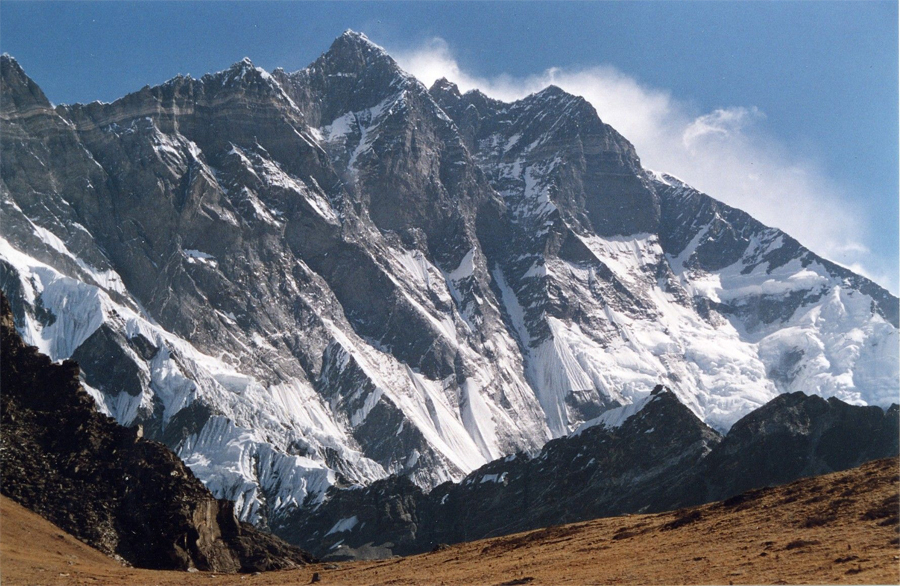
Credit: wikipedia.org
15. Kangchenjunga (8568 m) – Nepal/India
The third-highest peak in the world, Kangchenjunga has maintained its high rates of fatality (20%!), when most other mountains have seen a decrease with improved equipment and more knowledge of weather conditions. There are three routes from Nepal, and one from Sikkim in India which has remained closed since 2000 due to its danger.
The peak is located along the border of Nepal and India and has one of the deadliest climbs in the world. Unpredictable weather, cold temperatures, high altitude, and frequent avalanches are factors that made ascent so dangerous. Be ready for steep faces and overhanging glaciers, especially during descent.
- Climbing Season: April to May, September to October
- Most Popular Route: Southwest Face
- Fatalities: high (over 40 fatalities)
- Access and Base Camps: Kangchenjunga Base Camp
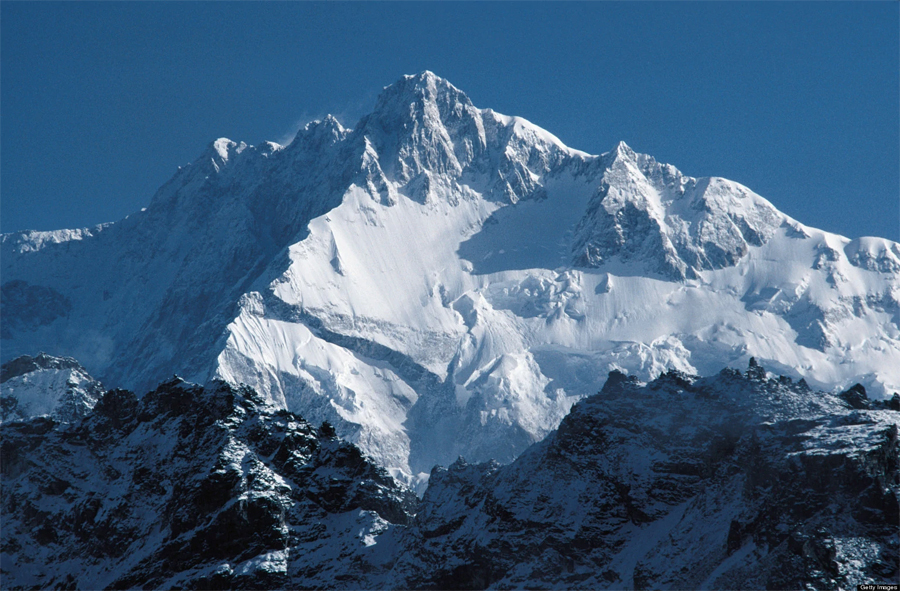
Credit: mountain.fandom.com
16. K2 (8614 m) – Pakistan/China
K2, located along the China-Pakistan border, is the highest point on the Karakoram Range and is well known for its difficult ascent. In fact, it is also called the Savage Mountain and has never had a winter ascent – if there had been climbers in winter, fatalities would increase manifold.
K2 is second to Everest in terms of height but is much more difficult to summit. Even the easiest routes require navigation around steep glaciers and unstable seracs. Moreover, the area is prone to multi-day storms, which combined with low oxygen levels at that altitude, can lead to disaster! If you’re preparing for this climb, be sure to ascend from a route on the Pakistani side; this is not a mountain to experiment with.
- Climbing Season: June to August
- Most Popular Route: Abruzzi Spur
- Fatalities: extremely high (over 80 fatalities)
- Access and Base Camps: Base Camp at Godwin-Austen Glacier

Credit: wikipedia.org
17. Mount Everest (8848 m) – Nepal/China
There are many mountains more technically difficult than Mount Everest, the world’s highest peak, but none as famous. The peak has two main climbing routes: the ‘standard’ route from Nepal, and another from the north in Tibet.
What to look out for: altitude sickness, weather, and wind, along with some avalanche-prone regions and the hazardous Khumbu Icefall. Perhaps the most dangerous part of this climb is the congestion on the route: its fame attracts highly inexperienced trekkers who are not prepared for the extreme climate conditions nor have the proper equipment. Starting with a climb till the base camp then recalibrating is a good plan.
- Climbing Season: April to June
- Most Popular Route: South Col Route (Nepal), North Ridge (China)
- Fatalities: notoriusly high (over 300 fatalities)
- Access and Base Camps: South Base Camp (Nepal), North Base Camp (China)
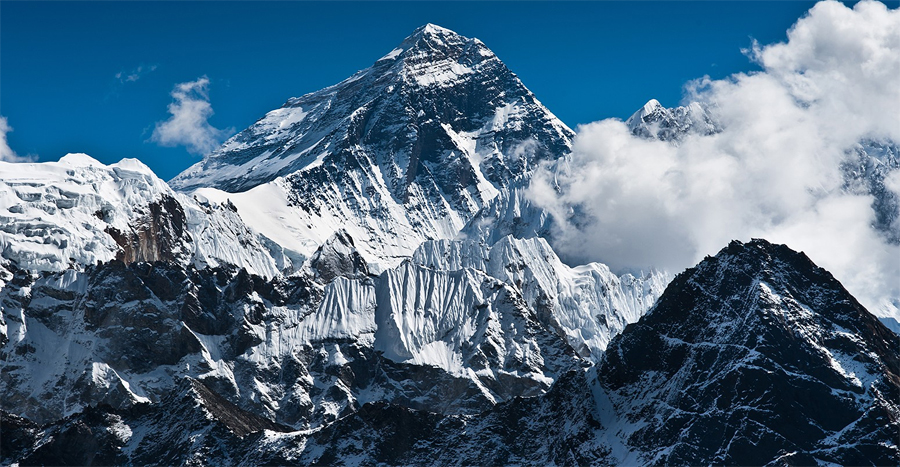
Credit: Arsgera/Shutterstock
AUSTRALIA AND OCEANIA
18. Mount Cook (3724 m) – New Zealand
Mount Cook, also known as Aoraki, is the highest peak in New Zealand and lies in the Southern Alps within a national park. It has three summits: Low Peak, Middle Peak, and High Peak. Although it is a popular tourist destination, it is also a favorite of mountain climbers!
The mountain has rain and wind throughout the year, and storms can often last for days. The rapid drop in temperature and low visibility add to the challenge of ascent. People often underestimate this climb, but Mount Cook has a high level of glaciation and unpredictable weather. The crevasses, avalanches, and rockfalls make it New Zealand’s deadliest peak. Don’t get fooled by its height, and practice your crampooning and steep ice climbing skills.
- Climbing Season: November to February
- Most Popular Route: Linda Glacier Route
- Fatalities: high (over 80 fatalities)
- Access and Base Camps: Aoraki/Mount Cook Village
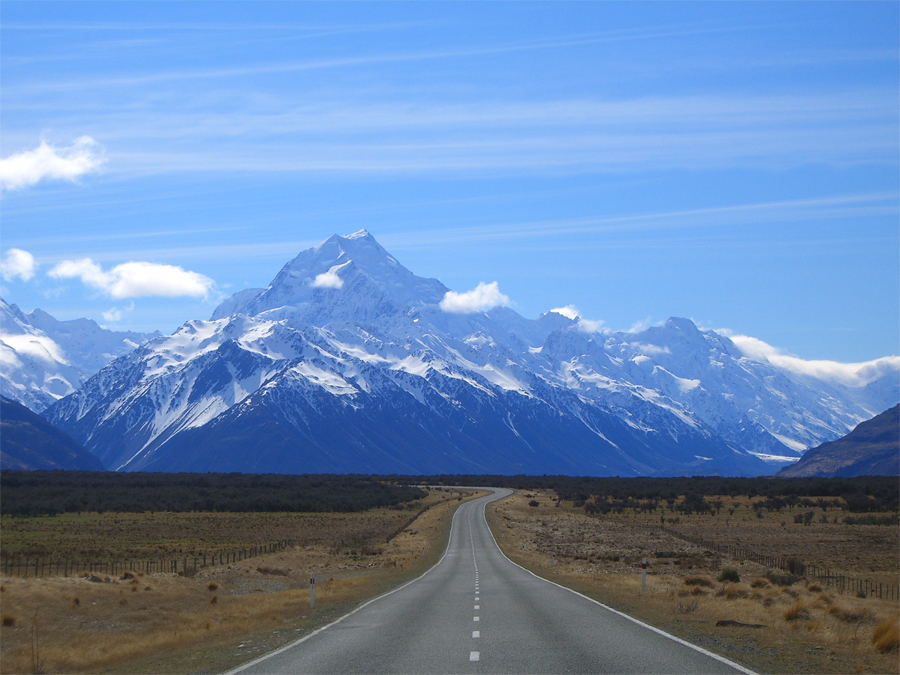
Credit: wikipedia.org
19. Puncak Jaya (4884m) – Indonesia
Puncak Jaya is the highest point between the Himalayas and the Andes and is located in the Papua province in Indonesia. It’s one of the famous ‘Seven Summits’ of Papua New Guinea but wasn’t climbed until 1962.
Few people have climbed this mountain, partly because of political instability in the region, but also because of its remote location. Puncak Jaya is a steep granite wall. It’s the only rock climbing peak out of the seven and requires a trek through a dense forest to reach the base camp. So you should be prepared for both heat and snow. Although the summit doesn’t have ice, there are glaciers on the slopes. Be especially comfortable with your ropework, and carry extra gloves – the rocks are sharp!
- Climbing Season: April to December
- Most Popular Route: North Face Standard Route
- Fatalities: moderate (specific numbers not widely reported)
- Access and Base Camps: Base Camp at Grasberg Mine
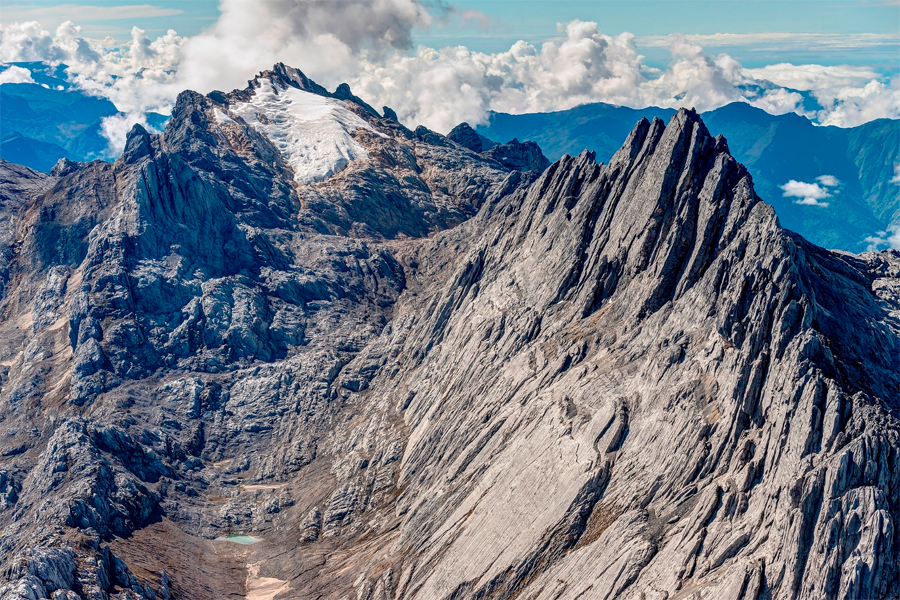
Credit: www.adventurealternative.com
20. Puncak Mandala (4757 m) – Indonesia
This is the second highest free-standing mountain in Indonesia (after Puncak Jaya) and is situated in Papua. It was first climbed in 1959, and until very recently, had a prominent ice cap.
There is immense mist on the mountain after 4000 m, so you should have provisions for low visibility. The climb is suited for experienced trekkers who are familiar with rock climbing equipment. Another factor that adds to the danger is the dense forests in the highlands below the peak, which make navigation extremely difficult.
- Climbing Season: April to December
- Most Popular Route: Standard Approach
- Fatalities: limited data
- Access and Base Camps: Local Villages as Starting Points
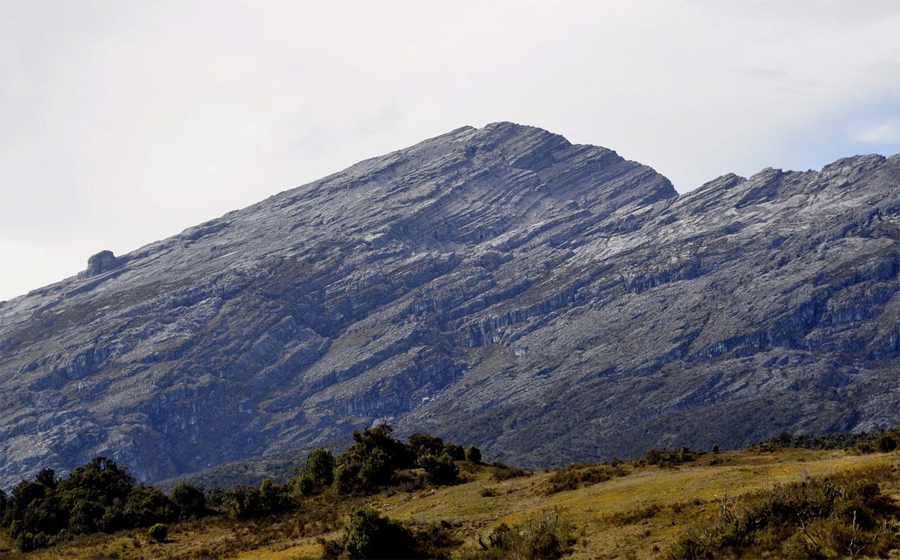
Credit: wikipedia.org
NORTH AMERICA
21. Mount Rainier (4392 m) – USA
Also known as Tahoma, this is one of the most dangerous active volcanoes in the world. It’s also one of the most glaciated mountains in the US, which, along with high altitude and unpredictable weather makes it a true mountaineering experience.
All the climbing routes require a lot of technical skills, including familiarity with equipment such as ice axes, crampoons, harnesses, and ropes. Level of difficulty depends on the route you pick: the Emmons Glacier route is grade II and comparatively easier, while the Liberty Ridge Route is grade IV and is considerably more dangerous. In fact, it is responsible for 25% of deaths even though it only sees 2% of climbers! Prepare for avalanches and ice falls.
- Climbing Season: May to September
- Most Popular Route: Disappointment Cleaver Route
- Fatalities: high (over 100 fatalities)
- Access and Base Camps: Paradise
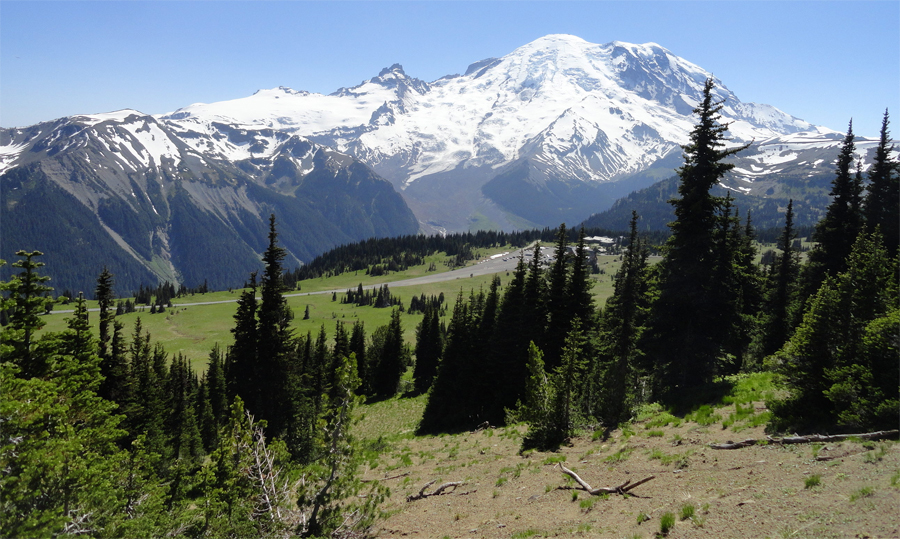
Credit: visitrainier.com
22. Mount St. Elias (5489 m) – USA/Canada
Situated on the Yukon and Alaska border, Mount St. Elias is the second highest peak in both Canada and the US. It was first climbed in 1897 (by a prince!) and saw its first winter ascent a century later.
The peak is known for its incredible vertical relief: its summit rises to 5489m in only 16 kilometers, making the descent especially treacherous. Although it is not very high in terms of elevation, the climb is dangerous because of long periods of bad weather and lack of easy routes till the summit. Thus, even when you start the climb, reaching the summit is no guarantee: if you’re hit by a particularly brutal storm, you’ll have to head back.
- Climbing Season: May to July
- Most Popular Route: Abruzzi Ridge
- Fatalities: significant (specific numbers not widely reported)
- Access and Base Camps: Icefield Base Camps
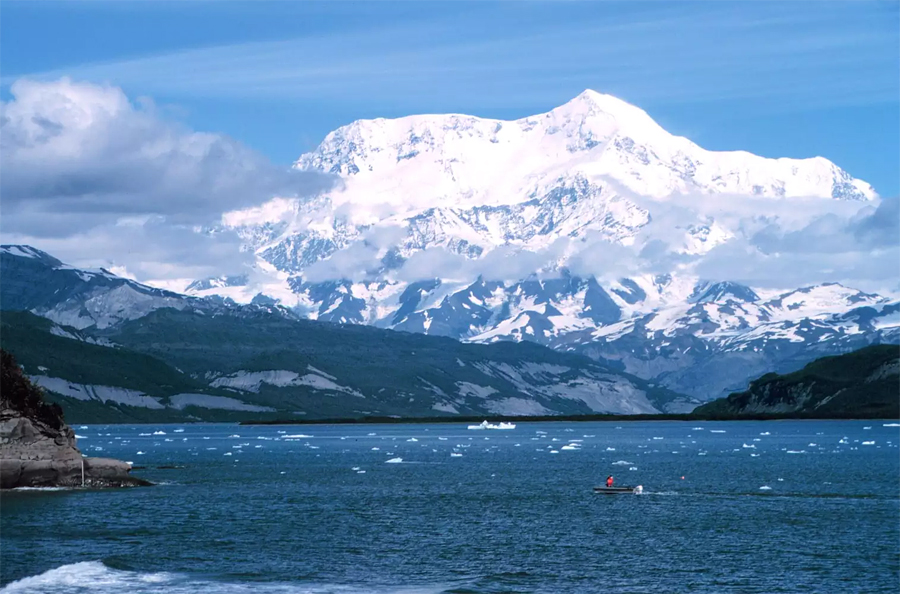
Credit: www.summitpost.org
23. Mount Logan (5959 m) – Canada
The highest peak in Canada! Mount Logan is close to the Yukon-Alaska border and is also the source point of the Hubbard and Logan glaciers. Temperatures are extremely low there: once you reach the plateau at 5000m, air temperature is about -45 degrees Celsius in the winter, and at the freezing point in the summer. The ice cap, unsurprisingly, is significant.
Anyone who attempts to climb Mount Logan must have considerable glacier experience, especially with regard to crevasse rescue and other snow and ice techniques (crampooning, self-arrest, roped glacier travel). There is no rock climbing or steep ice, so this is not as technically difficult as some other mountains we mentioned, but the cold can be the silent killer – be prepared for the weather.
- Climbing Season: May to June
- Most Popular Route: King’s Trench Route
- Fatalities: low (specific numbers not widely reported)
- Access and Base Camps: Base Camp on Quintino Sella Glacier
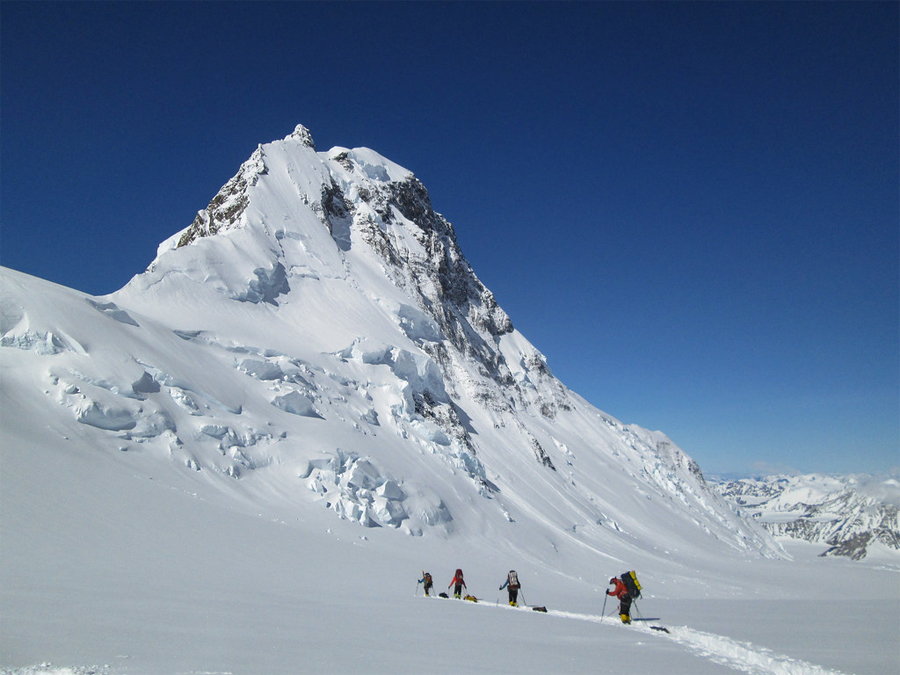
Credit: www.mountainmadness.com, Dave Green
24. Denali (6194 m) – USA
This is the highest peak of North America, and one of the most isolated peaks on earth. It has two significant summits: the highest South Summit, and the North Summit, which is rarely climbed.
The success rate of Denali is about 50%, and the mountain sees many deaths every year, the reasons being the altitude and the extreme temperatures (they go as low as -59 degree Celsius). Another factor is that it draws amateurs who aren’t mentally or physically prepared for the long expedition. Glacier experience is crucial for this ascent, as is experience with high altitudes.
- Climbing Season: May to July
- Most Popular Route: West Buttress
- Fatalities: high (around 130 fatalities)
- Access and Base Camps: Kahiltna Glacier Base Camp

Credit: wikipedia.org
SOUTH AMERICA
25. Cerro Paine Grande (2884 m) – Chile
Cerro Paine Grande is the highest summit of the Cordillera group of mountains in the Torres del Paine National Park in Chile. It has been climbed successfully only four times: in 1957, 2000, 2011, and 2016. All ascents were done by accessing the upper glacial plateau from the west.
You’ll need knowledge of ice climbing to climb this remote Patagonian peak. There might be crevasses hidden under the snow, so keep a note of that. The elevation might not be much, but the climb is demanding.
- Climbing Season: December to March
- Most Popular Route: South Face
- Fatalities: limited data
- Access and Base Camps: Torres del Paine National Park
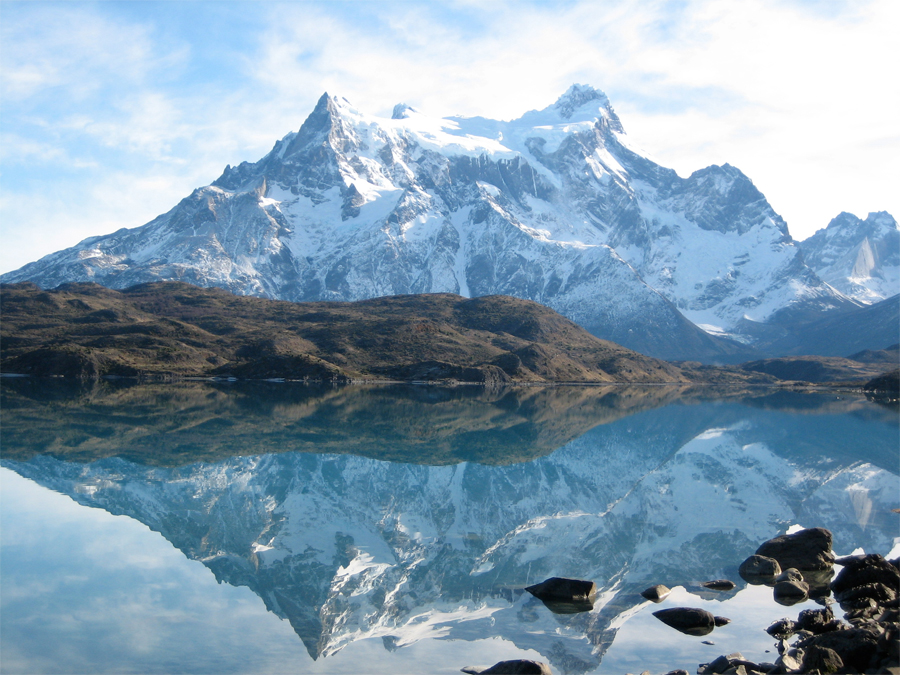
Credit: commons.wikimedia.org
26. Cerro Torre (3128 m) – Chile/Argentina
This is a mountain in the Southern Patagonian Ice Field in South America, in a disputed territory between Argentina and Chile. It is known for a mushroom of rime ice which was formed at the peak of the mountain because of perpetual strong winds. Most mountaineers consider the summit complete only if the difficult ice-rime is ascended. There has been immense controversy around its first few ascents.
The mountain reports avalanches and ice melts, making ascent extremely dangerous. Moreover, the mountain has only had a few successful summits, meaning there aren’t many defined routes. In fact, much of the mountain is simply not climbable!
- Climbing Season: December to March
- Most Popular Route: Southeast Ridge (Ragni Route)
- Fatalities: high (specific numbers not widely reported)
- Access and Base Camps: El Chaltén
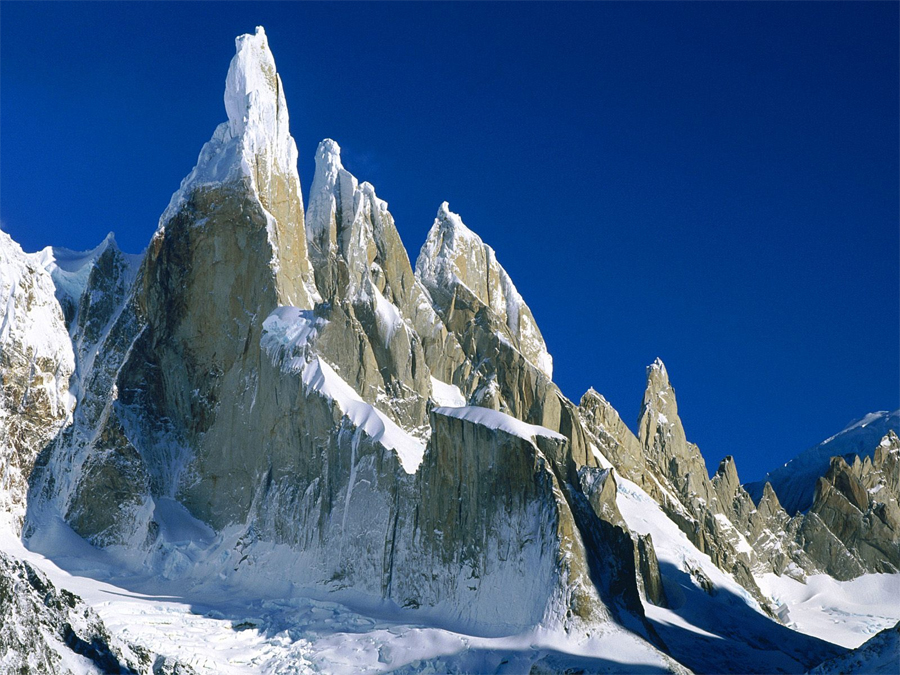
Credit: everydaywatchcountry.com
27. Mount Fitz Roy (3405 m) – Chile/Argentina
Another mountain in the Southern Patagonian Ice Field. Fitz Roy was first climbed in 1952 from its Southeast Ridge. It’s best to climb during the southern hemisphere’s summer months, December to February, but at any time of the year, you’re at the mercy of fickle Patagonian weather.
- Climbing Season: December to March
- Most Popular Route: Franco-Argentine Route
- Fatalities: moderate (specific numbers not widely reported)
- Access and Base Camps: El Chaltén
The final ascent is as brutal as it is rewarding: you need skill, experience, and immense perseverance to brave the steep granite cliffs; there are many hours of arduous climbing involved. Keep a watch for slippery slopes and changes in the weather.
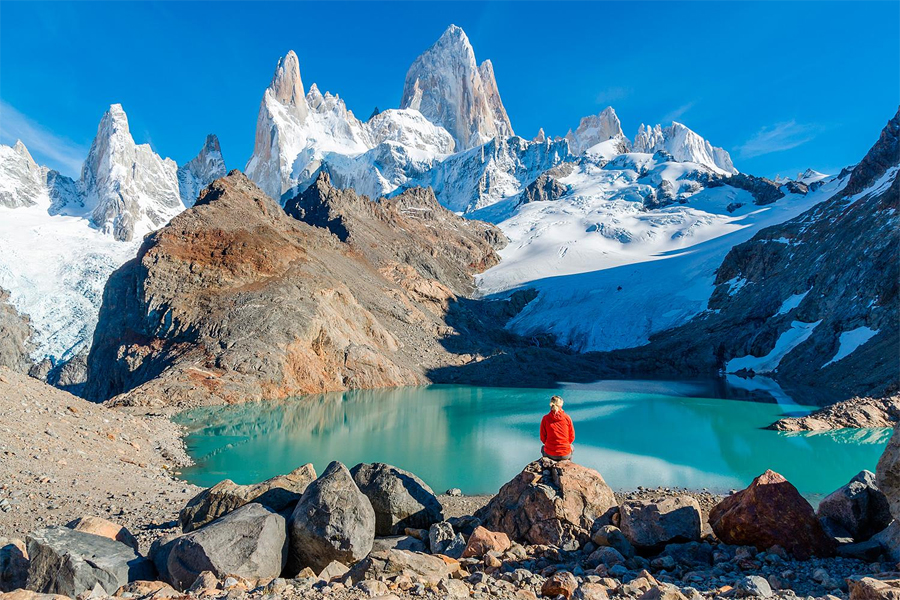
Credit: graylineargentina.com
28. Cotopaxi (5897 m) – Ecuador
Cotopaxi is an active stratovolcano in the Andes and the second highest summit in Ecuador. Its most recent eruption was in 2016, so it was closed for climbing for a year. The mountain has some unique aspects to its structure: it has one of the only equatorial glaciers in the world, and a huge crater at its summit. It saw its first ascent in 1872.
Knowledge of crampoons and ice axes is essential; there are numerous ice slopes! You’ll also need to cross a few crevasses. It’s not a deadly climb, but only if you prepare and acclimatize adequately. Perhaps 50% of climbers reach the summit, after a few hours of arduous scrambling.
- Climbing Season: June to August
- Most Popular Route: Normal Route
- Fatalities: low (specific numbers not widely reported)
- Access and Base Camps: José Rivas Refuge
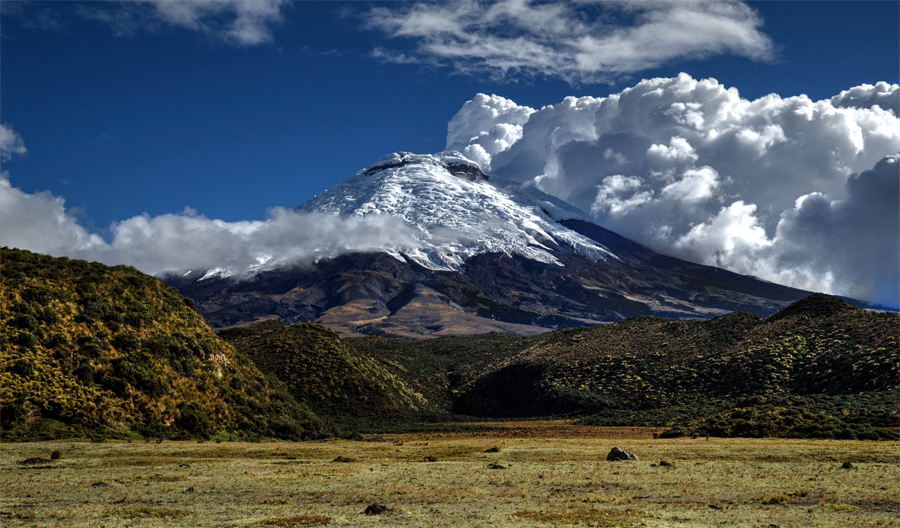
Credit: commons.wikimedia.org
29. Siula Grande (6344 m) – Peru
Siula Grande is a peak in the Huayhuash mountain range in the Peruvian Andes. It has multiple faces, and recently its hitherto unclimbed east face was climbed.
There’s both rock and ice climbing involved – and the descent is especially harrowing, which is why most mountaineers rappel down. There have been reports of rapid changes in the glaciers, which means even well-traveled routes from the 70s might be impossible to climb now.
- Climbing Season: May to September
- Most Popular Route: West Face
- Fatalities: high (specific numbers not widely reported)
- Access and Base Camps: Base Camp in Huayllapa
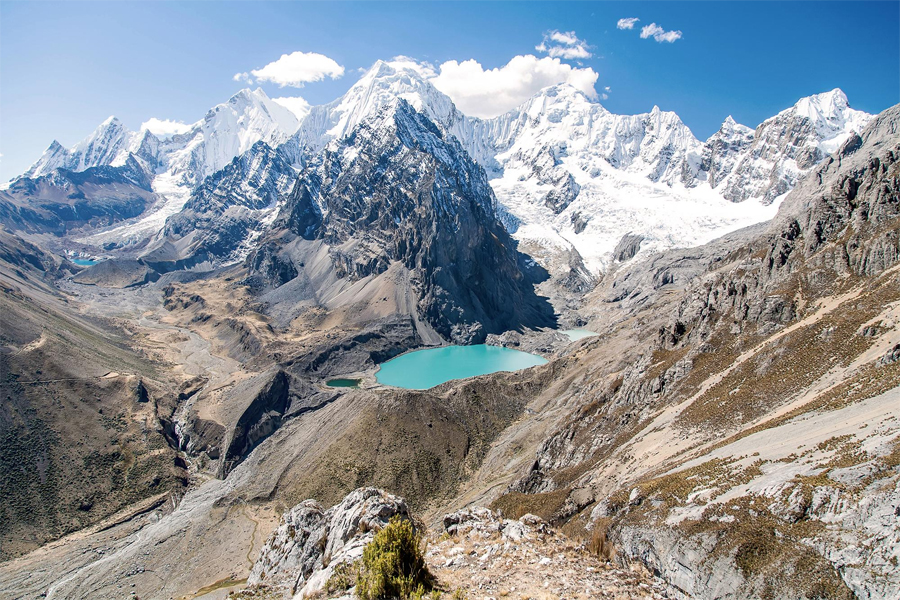
Credit: www.reddit.com
30. Huascaran (6768 m) – Peru
Huascaran is a mountain located in the Cordillera Blanca mountain range of the western Andes. It’s the 4th highest mountain in South America and the highest peak of Peru. It has two summits, the higher southern summit, and the northern summit.
The main difficulties are the crevasses that are infamous for blocking the route, and the danger of avalanches. You’ll need a week of acclimatization at least, and some experience with high altitudes, but the ascent itself is moderately difficult. The glacier climb is an incredible experience!
- Climbing Season: May to September
- Most Popular Route: Garganta Route
- Fatalities: extremely high (over 100 fatalities)
- Access and Base Camps: Musho Village Base Camp
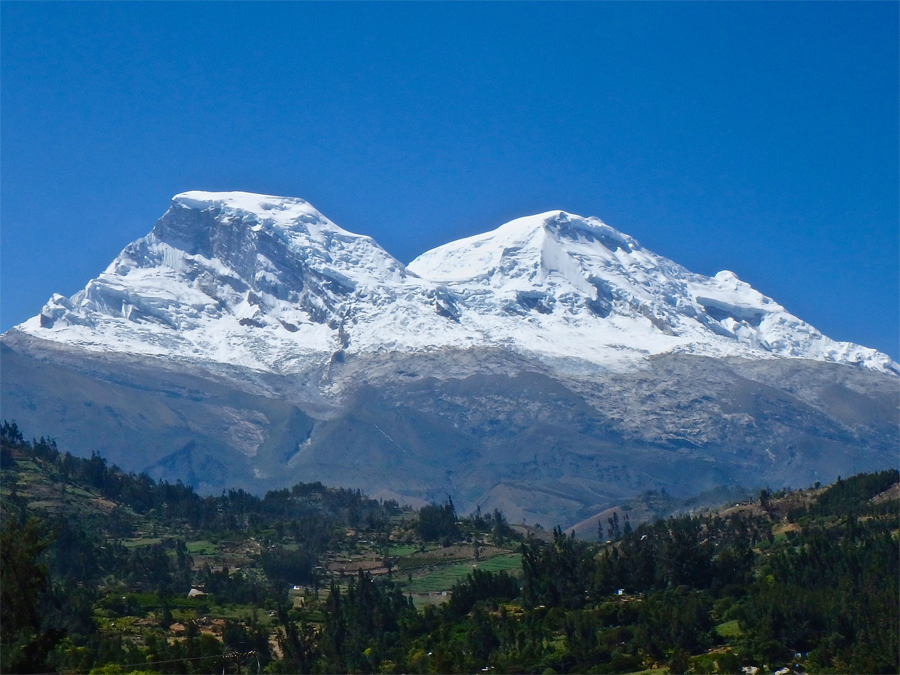
Credit: wikipedia.org
31. Ojos del Salado (6893 m) – Chile/Argentina
The highest active volcano in the world! This peak is located along the Argentina-Chile border in the Andes. Best time to climb is between December and March, but it’ll be windy and dry regardless.
There is not too much technical skill you need, apart from the summit rock tower. When you approach the summit, you should be ready for temperatures between -25 and -30 degrees Celsius, and winds over 80 kilometers per hour So the main issues are the altitude, and the cold and wind.
- Climbing Season: December to March
- Most Popular Route: Normal Route
- Fatalities: low (specific numbers not widely reported)
- Access and Base Camps: Atacama Region Base
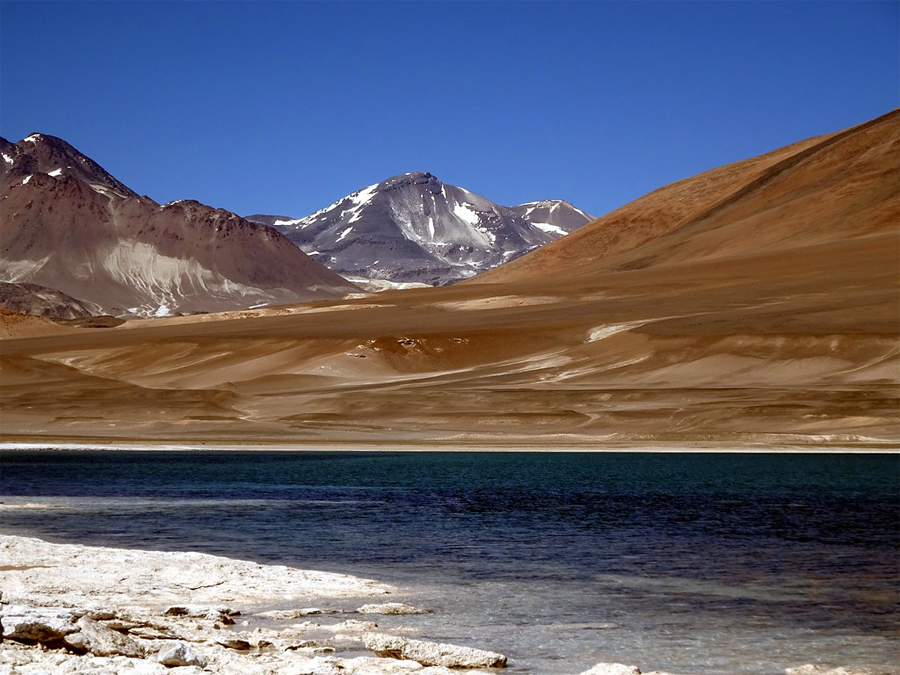
Credit: www.flickr.com, Mark Horrell
32. Aconcagua (6962 m) – Argentina
Aconcagua is the highest mountain outside of Asia, situated in Argentina in the Andes mountain range. The first recorded ascent was in 1897 by the northwest ridge, which is now considered the ‘normal’ and non-challenging route of the peak.
This mountain is perhaps the highest non-technical mountain in the world because if you approach it from the normal route, you won’t need much equipment. But people underestimate the effects of altitude and weather, and there are multiple casualties despite the relative ease of the ascent. Cold weather injuries are also common.
- Climbing Season: November to March
- Most Popular Route: Normal Route
- Fatalities: high (over 100 fatalities)
- Access and Base Camps: Plaza de Mulas
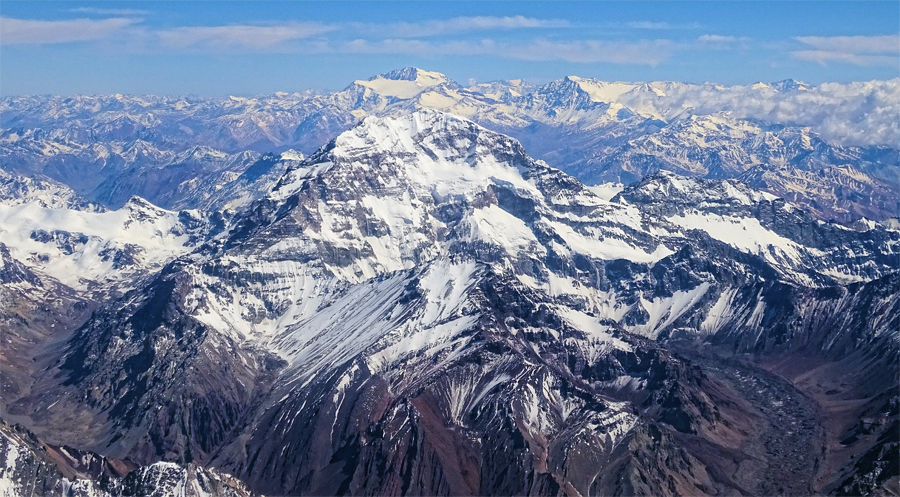
Credit: wikipedia.org
AFRICA
33. Mount Kenya (5199 m) – Kenya
Mount Kenya, a long-dormant volcano, is the highest mountain in Kenya and was covered by an ice cap for thousands of years. A national park protects the area around the mountain. Most of the peaks on Mount Kenya have been climbed, even the ice routes.
Acclimatize well, and be prepared for the freezing temperatures, and you shouldn’t have any trouble. Batian is the true summit of Mount Kenya, which rises above Point Lenana (the more popular stop, and the highest point you can get to without climbing) – if you want to push yourself, you can practice your rock and ice climbing skills and head up there. The ice routes (such as the Diamond Couloir) are getting especially dangerous nowadays since the ice levels are retreating, so be careful.
- Climbing Season: January to February, July to October
- Most Popular Route: Sirimon Route
- Fatalities: low (specific numbers not widely reported)
- Access and Base Camps: Mount Kenya National Park
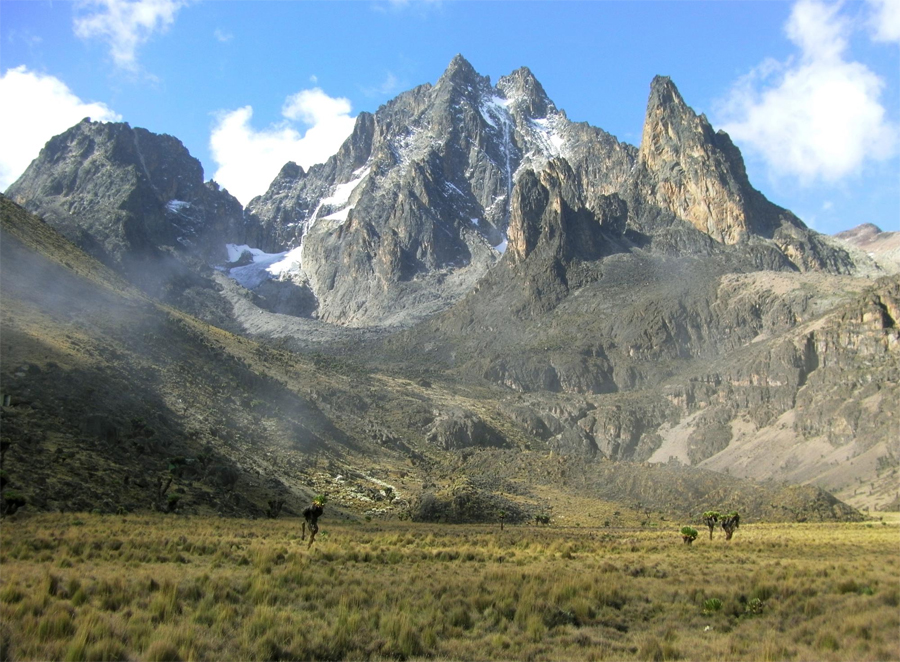
Credit: www.adventurealternative.com
34. Kilimanjaro (5898 m) – Tanzania
Another dormant volcano, this time in Tanzania, and the highest peak of Africa. It’s extremely popular as a trekking destination and has been scoped out since the 1800s.
Although the climb is not as technically challenging as the Himalayas or the Andes, the low temperatures, high altitude, and high winds and can make it a difficult climb. You should prepare for acute mountain sickness and perhaps opt out of the fast-moving commercial tour groups that prioritize speed over health. And there are definitely steep portions in the ascent that need fitness!
- Climbing Season: January to March, June to October
- Most Popular Route: Marangu Route
- Fatalities: moderate (specific numbers not widely reported)
- Access and Base Camps: Marangu Gate

Credit: www.nationalgeographic.com
ANTARCTICA
35. Mount Vinson (4892 m) – Antarctica
Vinson Massif is a large mountain massif in Antarctica (the perfect place to restart your life) that stretches for about 21 kilometers. Mount Vinson, Antarctica’s highest peak, is on the north side of this massif. First ascended in 1966, this peak has received considerable attention because it’s one of the ‘Seven Summits’.
The climate of this peak is fairly stable, but as in any polar climate, the region is prone to high winds and snowfall. Spending some time at the base camp will acclimatize you to Antarctic weather. The isolation, extreme temperatures, and winds make this a dangerous trek. Frostbite is a real possibility, and getting to a hospital could take weeks!
- Climbing Season: November to January
- Most Popular Route: Standard Route
- Fatalities: very low (specific numbers not widely reported)
- Access and Base Camps: Vinson Base Camp
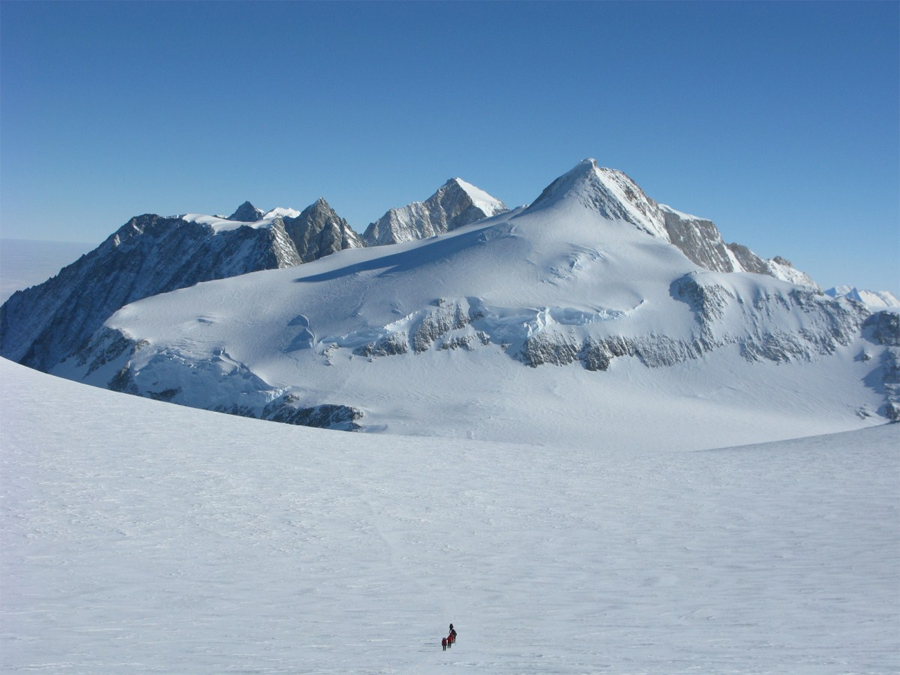
Credit: www.reddit.com
This list should give you lots of ideas for your next mountaineering adventure! As we’ve seen, there are numerous factors that make a climb challenging (or deadly), one shouldn’t be fooled by low elevations. No matter what part of the world you’re in, there are rewarding summits and spectacular views waiting for you! You just have to do your due diligence in preparation.
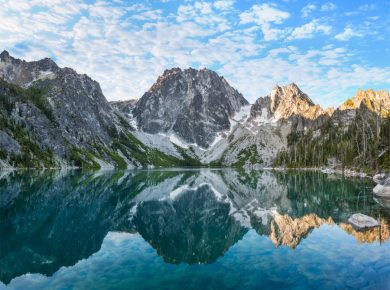
2 comments
Thank you for your article – these mountains are indeed incredibly dangerous and best left alone unless you’re a professional and highly experienced climber. Let me share a short story about an ascent of one of these peaks – Annapurna, back in 1950.
During the historic 1950 ascent of Annapurna, Maurice Herzog, despite suffering severe frostbite, carried a French flag and a small bottle of liqueur in his pack all the way down. His reasoning? If he didn’t make it, these symbols of the achievement would remain.
Against all odds, Herzog survived, became a national hero in France, and wrote Annapurna: The First Conquest of an 8000-Meter Peak, a book that went on to inspire countless climbers. This incredible story reminds us of the dangers and unpredictability of the mountains, but also of the unwavering determination that drives mountaineers like us to dream big.
Love the mountains and remarks on climbing challenges. I enjoy nature especially remote situations. Wild life fauna and flora are big interests of mine too